Development of Metal-Ceramic Coaxial Cable Fabry-Pérot Interferometric Sensors for High Temperature Monitoring
Abstract
:1. Introduction

2. Experimental Section
2.1. Materials
2.2. Sensor Fabrication
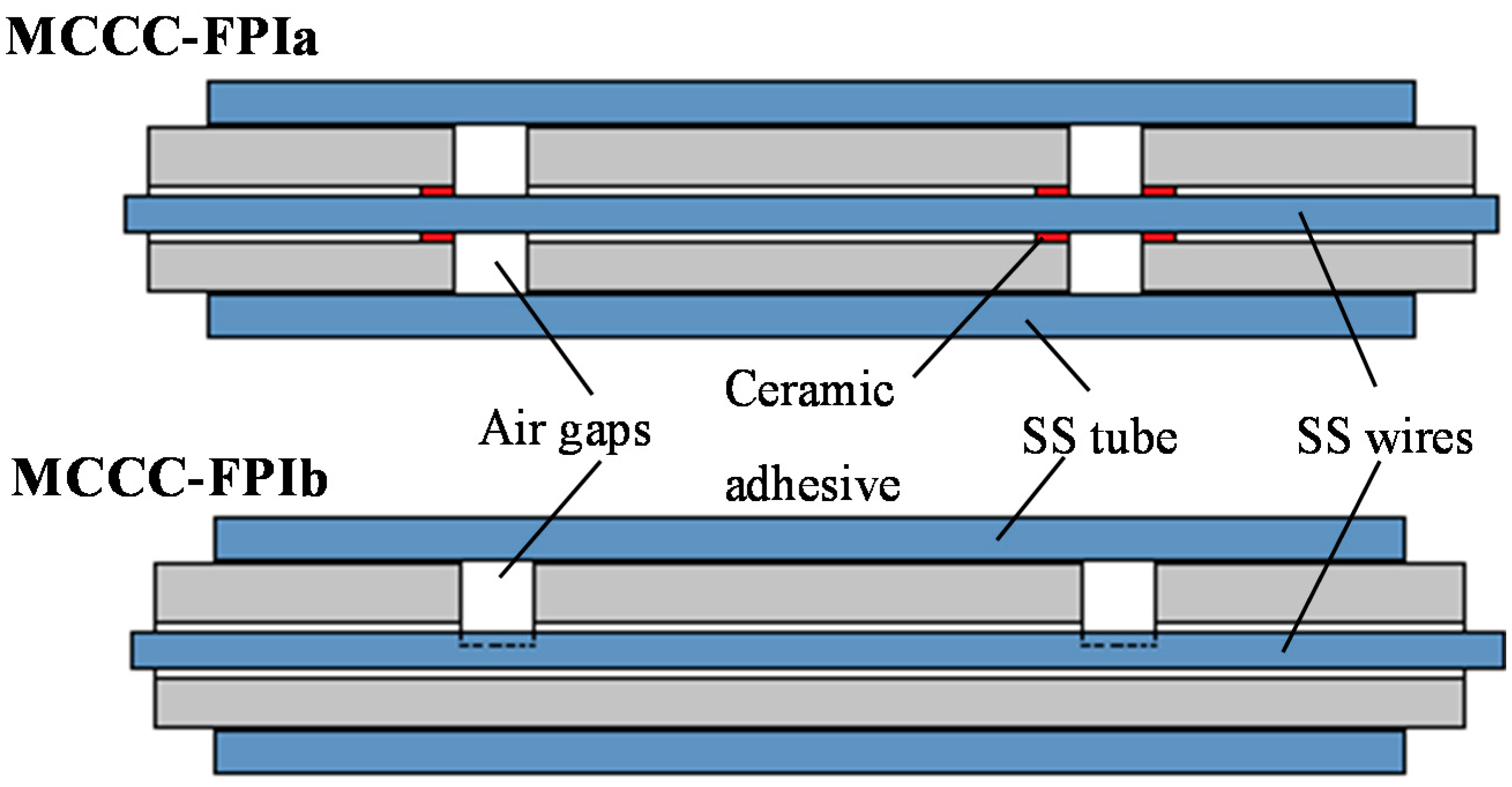
2.3. High Temperature Measurement
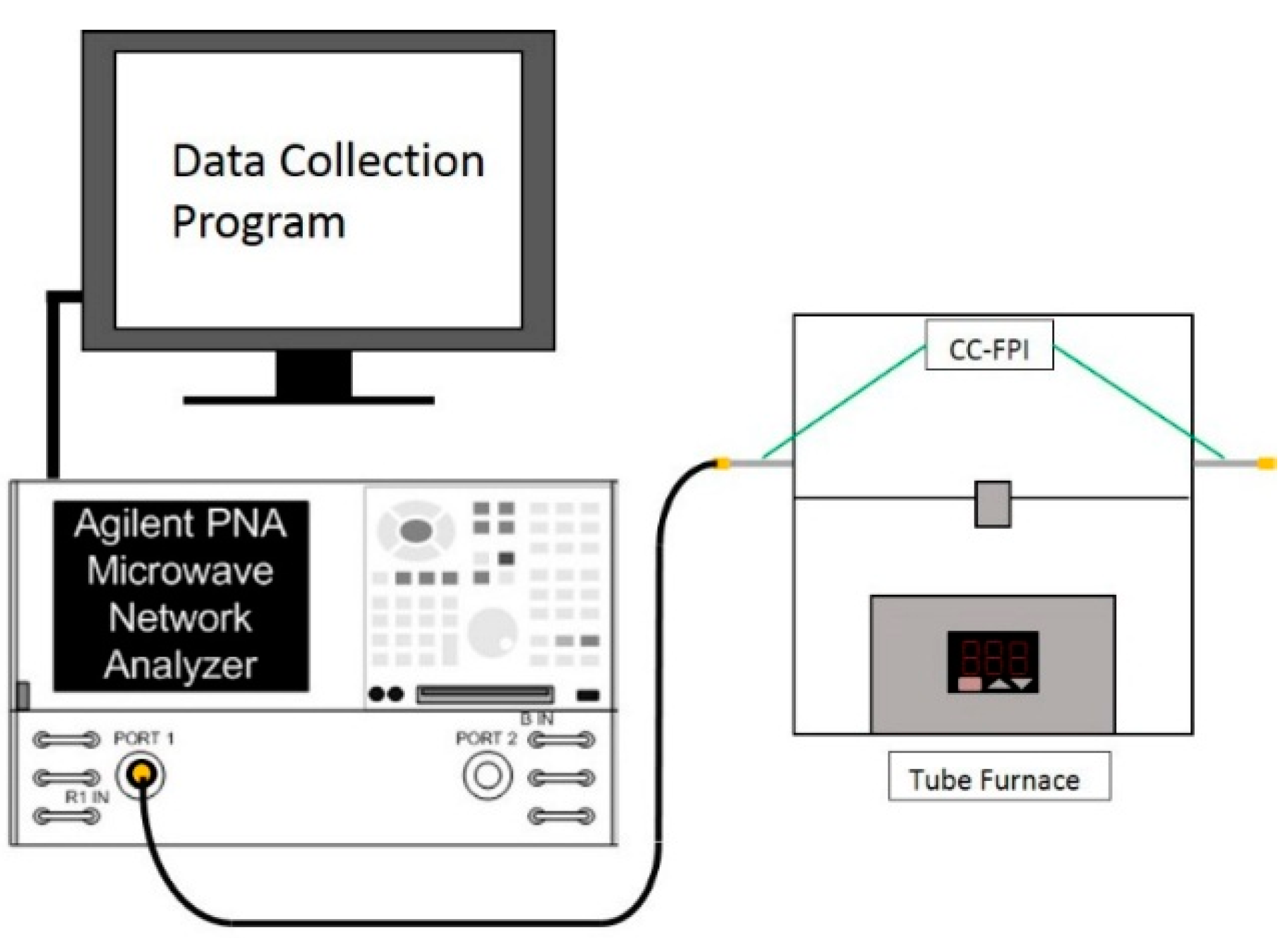
3. Results and Discussion
3.1. Sensor Structures and Response to Temperature
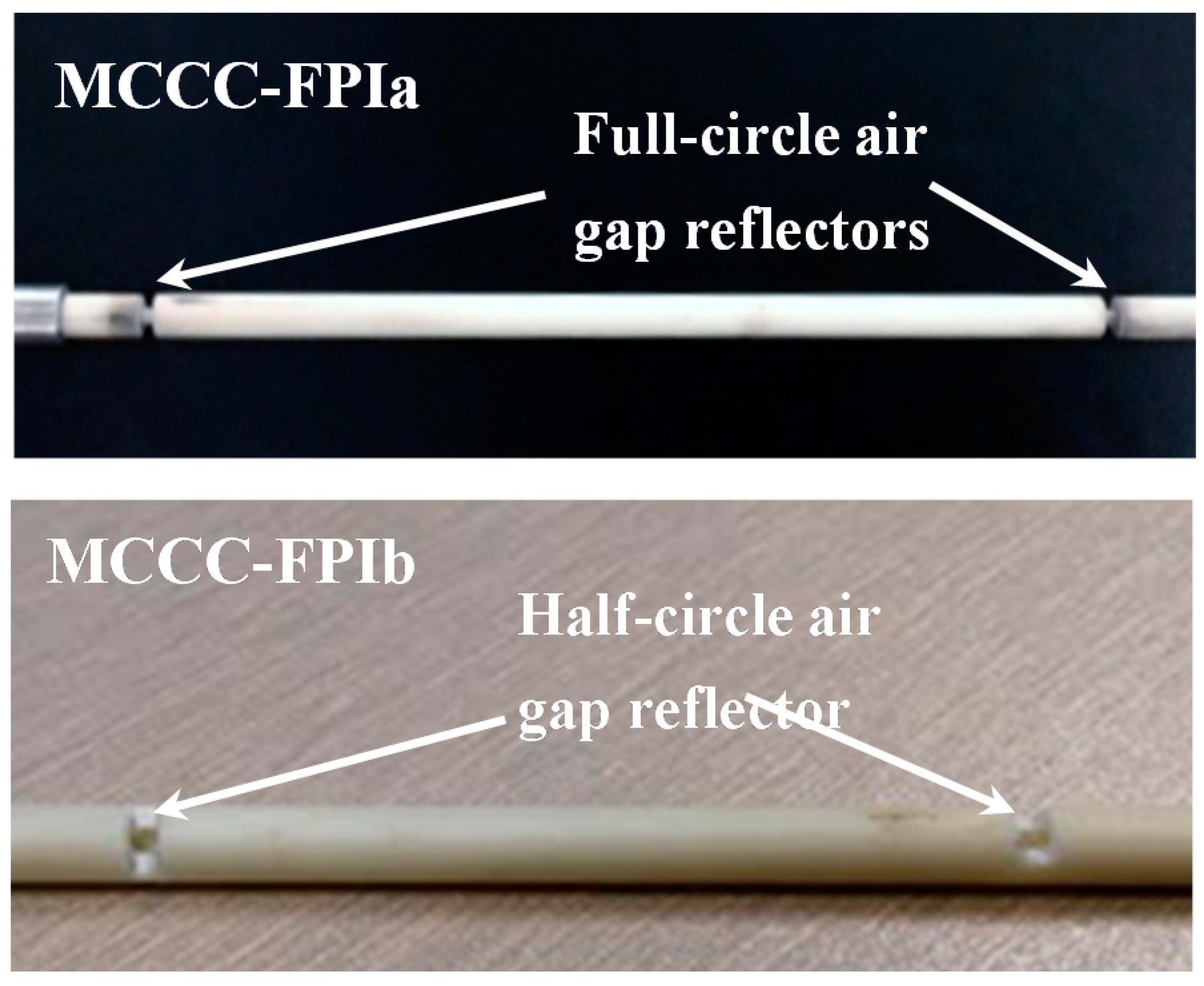
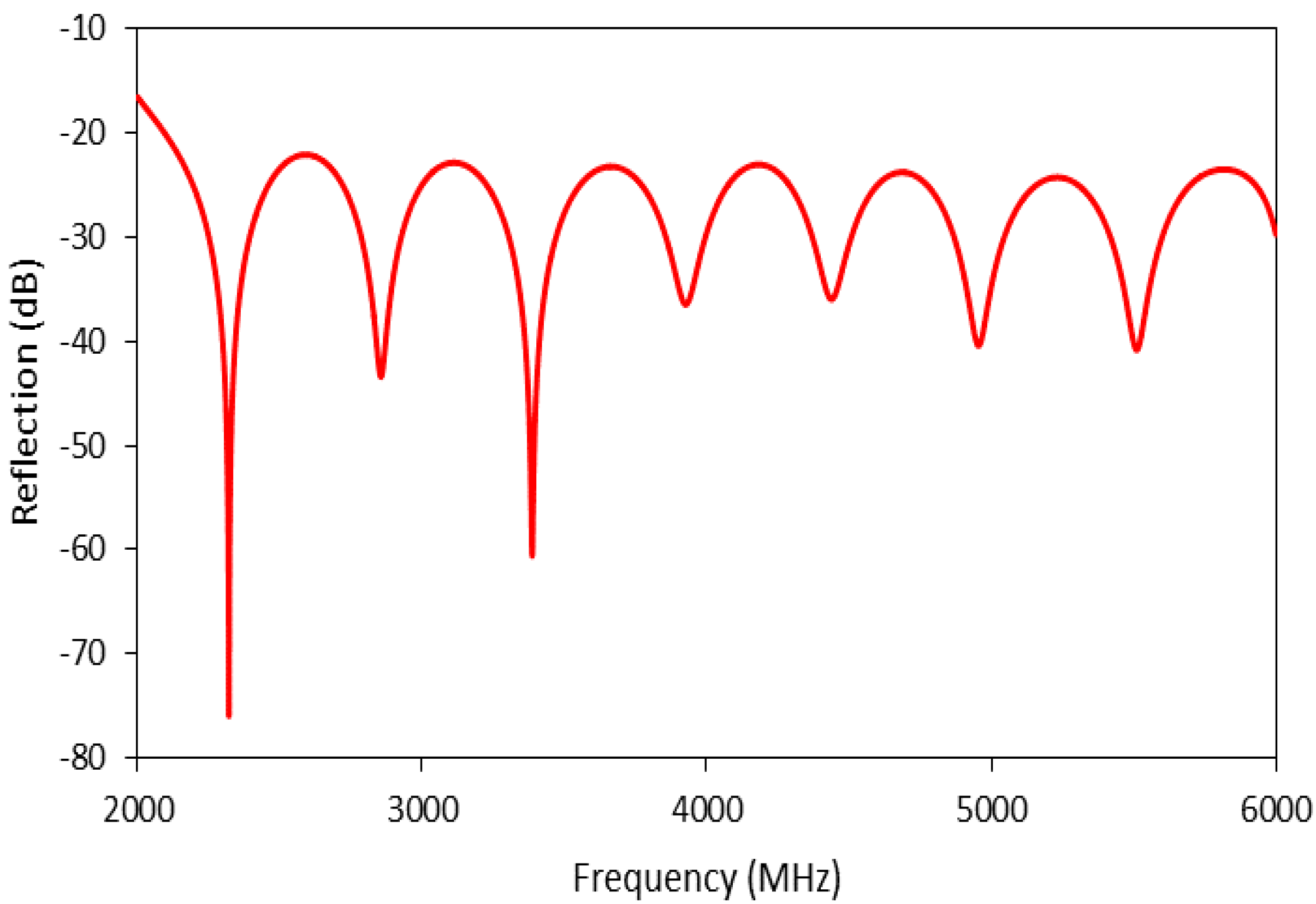
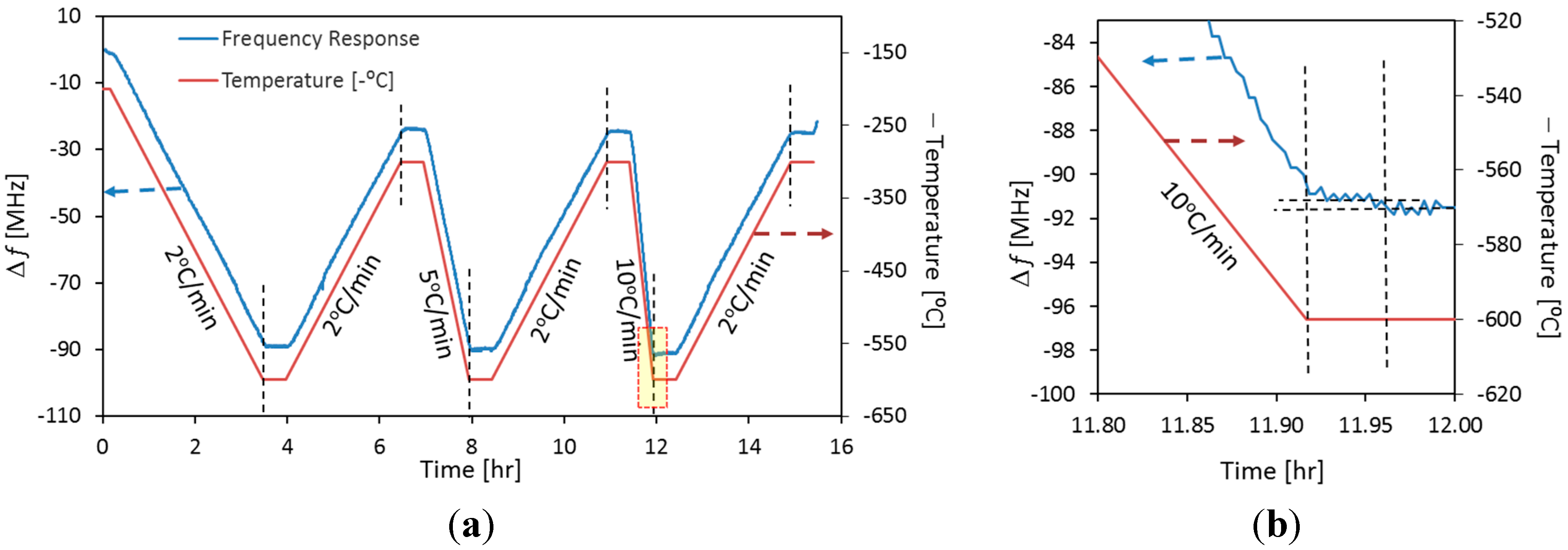
3.2. High Temperature Measurement
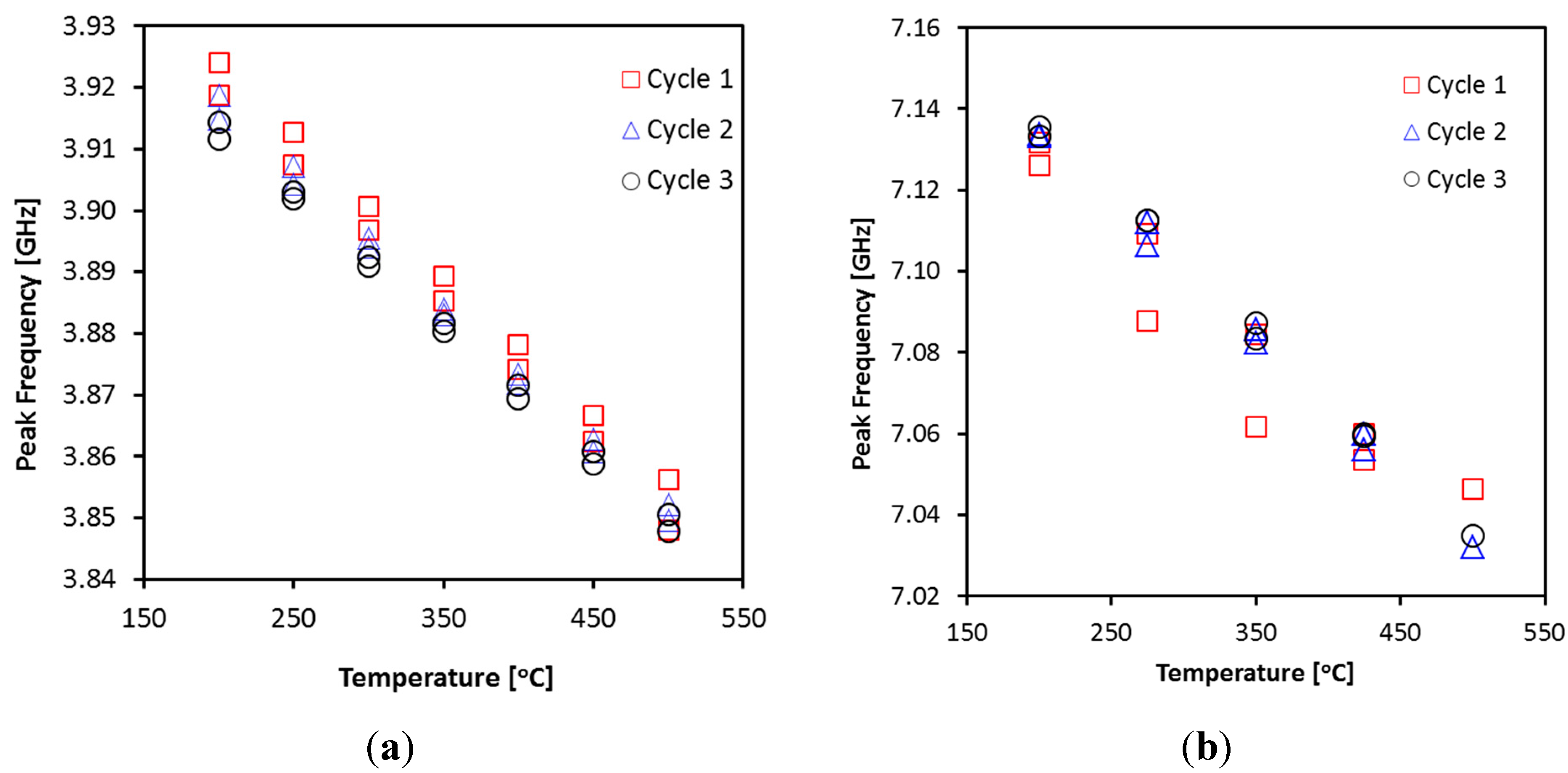
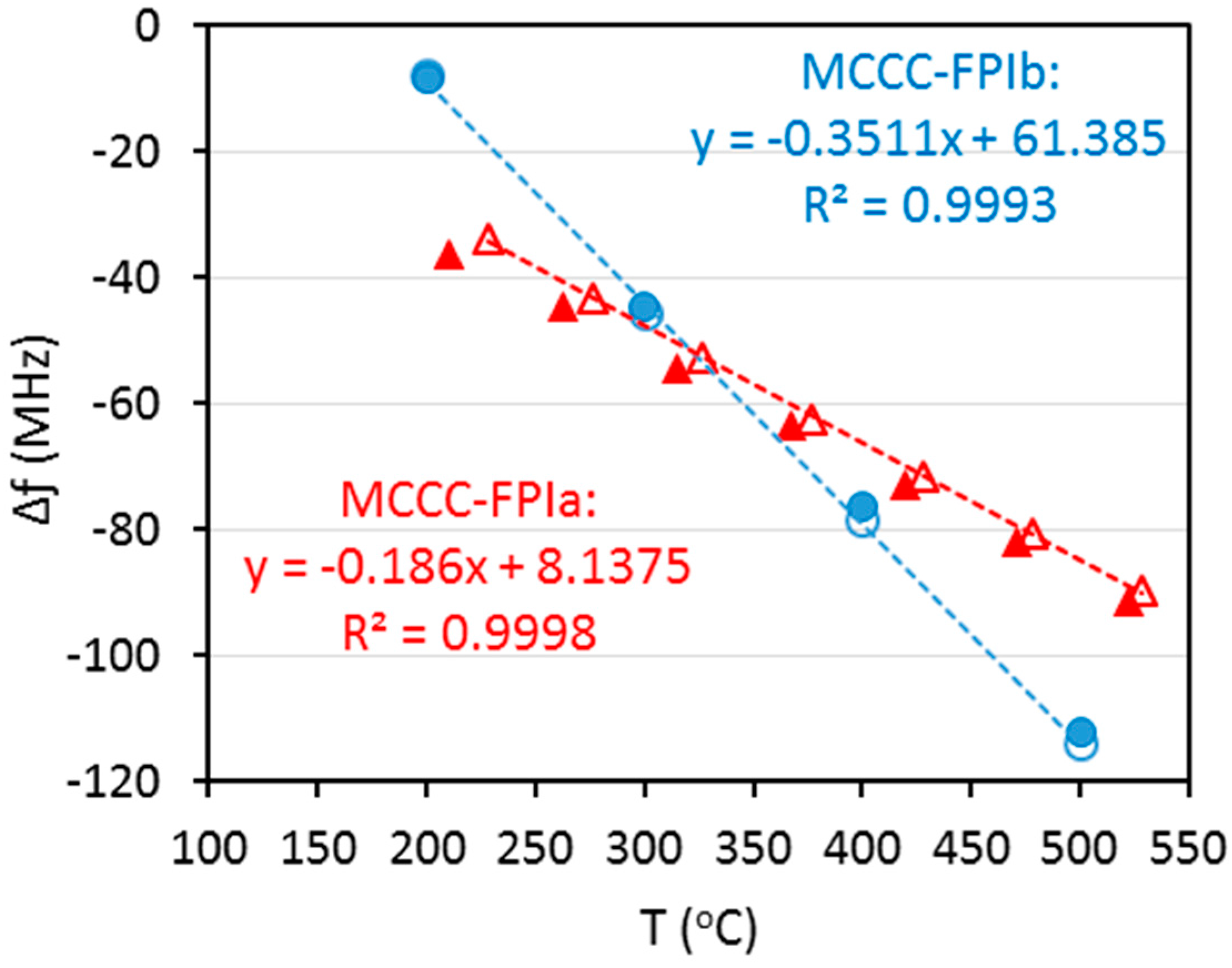
4. Conclusions
Acknowledgments
Author Contributions
Conflicts of Interest
References
- Figueroa, J.D.; Fout, T.; Plasynski, S.; McIlvried, H.; Srivastava, R.D. Advances in CO2 capture technology—The US Department of Energy’s Carbon Sequestration Program. Int. J. Greenh. Gas Contr. 2008, 2, 9–20. [Google Scholar] [CrossRef]
- Castello, P.; Guttmann, V.; Farr, N.; Smith, G. Laboratory-simulated fuel-ash corrosion of superheater tubes in coal-fired ultra-supercritical-boilers. Mater. Corros. 2000, 51, 786–790. [Google Scholar] [CrossRef]
- Chorpening, B.T.; Tucker, D.; Maley, S.M. Sensors applications in 21st century fossil-fuel based power generation. IEEE Sens. Proc. 2004, 3, 1153–1156. [Google Scholar]
- Hendriks, C. Carbon Dioxide Removal from Coal-Fired Power Plants; Kluwer Academic Publishers: Dordrecht, Holland, 1994; pp. 233–245. [Google Scholar]
- Leng, J.; Asundi, A. Structural health monitoring of smart composite materials by using EFPI and FBG sensors. Sens. Actuators A Phys. 2003, 103, 330–340. [Google Scholar] [CrossRef]
- Todd, M.D.; Nichols, J.M.; Trickey, S.T.; Seaver, M.; Nichols, C.J.; Virgin, L.N. Bragg grating-based fibre optic sensors in structural health monitoring. Philos. Trans. R. Soc. A Math. Phys. Eng. Sci. 2007, 365, 317–343. [Google Scholar] [CrossRef] [PubMed]
- Yin, S.; Ruffin, P.B.; Yu, F.T.S. Fiber Optic Sensors, 2nd ed.; CRC Press: Boca Raton, FL, USA, 2008. [Google Scholar]
- Li, H.N.; Li, D.S.; Song, G.B. Recent applications of fiber optic sensors to health monitoring in civil engineering. Eng. Struct. 2004, 26, 1647–1657. [Google Scholar] [CrossRef]
- Fielder, R.S.; Duncan, R.G.; Palmer, M.L. Recent advancements in harsh environment fiber optic sensors: An enabling technology for space nuclear power. In Proceedings of the American Nuclear Society Embedded Topical Meeting, Space Nuclear Conference, San Diego, CA, USA, 2005; pp. 476–484.
- Rodrigues, C.; Félix, C.; Lage, A.; Figueiras, J. Development of a long-term monitoring system based on FBG sensors applied to concrete bridges. Eng. Struct. 2010, 32, 1993–2002. [Google Scholar] [CrossRef]
- Zhu, H.; Yin, J.; Jin, W.; Kuo, T.M.K. Health monitoring of foundations using fiber Bragg grating sensing technology. Tumu Gongcheng Xuebao/China Civil Eng. J. 2010, 43, 109–115. [Google Scholar]
- Hill, K.O.; Fujii, Y.; Johnson, D.C.; Kawasaki, B.S. Photosensitivity in optical fiber waveguides: Application to reflection filter fabrication. Appl. Phys. Lett. 1978, 32, 647–664. [Google Scholar] [CrossRef]
- Kersey, A.D.; Davis, M.A.; Patrick, H.J.; LeBlanc, M.; Koo, K.P.; Askins, C.G.; Putnam, M.A.; Friebele, E.J. Fiber grating sensors. J. Lightwave Technol. 1997, 15, 1442–1462. [Google Scholar] [CrossRef]
- Yunmiao, W.; Jianmin, G.; Wang, D.Y.; Bo, D.; Weihong, B.; Anbo, W. A Quasi-Distributed Sensing Network with Time-Division-Multiplexed Fiber Bragg Gratings. IEEE Photonics Technol. Lett. 2011, 23, 70–72. [Google Scholar]
- Wei, T.; Wu, S.; Huang, J.; Xiao, H.; Fan, J. Coaxial Cable Bragg Gratings. Appl. Phys. Lett. 2011, 99, 113517. [Google Scholar] [CrossRef]
- Huang, J.; Wei, T.; Hua, L.; Fan, J.; Xiao, H. A Coaxial Cable Fabry-Pérot Interferometer for Sensing Applications. Sensors 2013, 13, 15252–15260. [Google Scholar] [CrossRef] [PubMed]
- Huang, J.; Wei, T.; Fan, J.; Xiao, H. Coaxial cable Bragg grating assisted microwave coupler. Rev. Sci. Instrument. 2014, 85, 014703. [Google Scholar] [CrossRef] [PubMed]
- Chen, L.Y.; Hunter, G.W. Temperature Dependent Dielectric Properties of Polycrystalline 96% Al2O3. In Procedings of the MRS Fall Meeting, Boston, MA, USA, 20 November–3 December 2004.
- Elliott, P. Choose Materials for High-Temperature Environments. Chem. Eng. Progr. 2001, 97, 75–91. [Google Scholar]
- Li, H.; Ra, C.; Zhang, G.; Yoo, W.J. Frequency and Temperature Dependence of the Dielectric Properties of a PCB Substrate for Advanced Packaging Applications. J. Korean Phys. Soc. 2009, 54, 1096–1099. [Google Scholar] [CrossRef]
- Krupkay, J.; Derzakowskiz, K.; Riddlex, B.; Baker-Jarvis, J. A dielectric resonator for measurements of complex permittivity of low loss dielectric materials as a function of temperature. Meas. Sci. Technol. 1998, 9, 1751–1756. [Google Scholar] [CrossRef]
© 2015 by the authors; licensee MDPI, Basel, Switzerland. This article is an open access article distributed under the terms and conditions of the Creative Commons Attribution license (http://creativecommons.org/licenses/by/4.0/).
Share and Cite
Trontz, A.; Cheng, B.; Zeng, S.; Xiao, H.; Dong, J. Development of Metal-Ceramic Coaxial Cable Fabry-Pérot Interferometric Sensors for High Temperature Monitoring. Sensors 2015, 15, 24914-24925. https://doi.org/10.3390/s151024914
Trontz A, Cheng B, Zeng S, Xiao H, Dong J. Development of Metal-Ceramic Coaxial Cable Fabry-Pérot Interferometric Sensors for High Temperature Monitoring. Sensors. 2015; 15(10):24914-24925. https://doi.org/10.3390/s151024914
Chicago/Turabian StyleTrontz, Adam, Baokai Cheng, Shixuan Zeng, Hai Xiao, and Junhang Dong. 2015. "Development of Metal-Ceramic Coaxial Cable Fabry-Pérot Interferometric Sensors for High Temperature Monitoring" Sensors 15, no. 10: 24914-24925. https://doi.org/10.3390/s151024914
APA StyleTrontz, A., Cheng, B., Zeng, S., Xiao, H., & Dong, J. (2015). Development of Metal-Ceramic Coaxial Cable Fabry-Pérot Interferometric Sensors for High Temperature Monitoring. Sensors, 15(10), 24914-24925. https://doi.org/10.3390/s151024914





